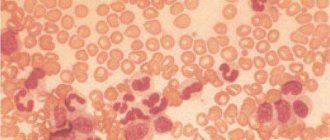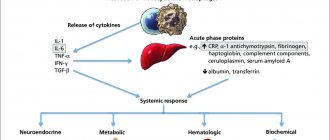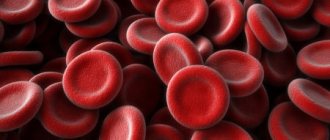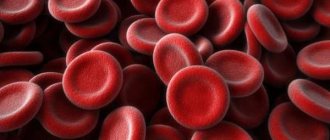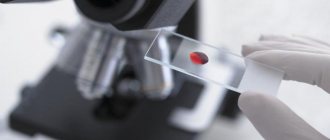Ekaterina Smolnikova
Practicing endocrinologist (10 years of experience). He has extensive experience working in private and public clinics in Russia.
Ask a Question
Last updated August 22, 2020 at 03:36 pm
One of the indicators of the proper functioning of the urinary system is creatinine.
The norm in women's blood changes according to age. Sometimes the increase in the substance is physiological and does not require treatment. However, long-lasting high levels indicate problems in the body.
What is creatinine?
Creatinine is a product of energy exchange in tissues. It is synthesized by muscles and then enters the bloodstream. What is this substance responsible for? Creatinine is an important component of the creatine-phosphate reaction, without it it is impossible to carry out energy metabolism in tissues.
Since it is a breakdown product, it has a toxic effect on tissues. To neutralize the negative effects of creatinine, the kidneys must work well to remove it from the body.
The more muscle mass a person has, the higher the creatinine concentration. During the day, the indicator remains constant, since muscle mass does not change.
Source: https://ru.wikipedia.org/wiki/Creatine
Definition of creatinine?
Creatinine is the final product of amino acid-protein metabolism, which has a direct connection with metabolic processes in muscles. It tends to be synthesized in liver cells and eliminated from the body through the kidneys in the urine.
It is worth noting that urea in the blood structure varies within acceptable limits from 53 to 132 µmol/l and if the creatinine level in the blood exceeds the norm, we can talk about renal failure. No less dangerous is a decrease in the amount of the final product - this is fraught with muscular dystrophy and protein starvation.
Norm of creatinine in women's blood (table)
The amount of the substance differs between women and men due to differences in muscle mass. Representatives of the stronger sex have a higher concentration of the substance. In addition, creatinine is affected by age, exercise, and diet. However, the weight of these factors creates minor differences in performance.
A significant deviation from the norm indicates that the kidneys are not functioning normally.
Creatinine norms for women by age are presented in the table:
| Age | Amount in µmol/l |
| Up to 12 months | 55-99 |
| From 12 months to 5 years | 31-52 |
| From 5 to 12 years | 34-60 |
| From 12 to 16 years | 48-70 |
| From 16 to 20 years | 51-81 |
| After 20 years | 50-97 |
| After 50 years | 55-88 |
| After 60 years | 60-89 |
Article on the topic:
Norms of total protein in the blood of women. Table and transcript of analyzes
In men, values fluctuate around 75-110 µmol/l. In professional athletes the number is higher, and in old age the level decreases to 65-90.
Mechanism of development of the disorder
Among the pathogenetic factors, several key ones can be named. Those that occur in all cases, but not at the same time:
Endocrine disorders
The first and main mechanism for the formation of high concentrations of creatinine in the blood is associated with disruptions in the functioning of hormone-producing organs. Damage to the thyroid gland, pituitary gland, adrenal glands and other structures affects.
It is important that creatinine is formed more actively when there is an excessive amount of body hormones. This is natural, although not obvious, unless we consider the physiological processes in more detail.
Pathologies include hyperthyroidism, pituitary tumors with excessive production of substances from this organ, etc. There are dozens of options.
Traumatic skin lesions
Mostly burns. With the active removal of protein from damaged tissues, the concentration of creatinine in the body increases.
This happens for a very understandable reason. The kidneys excrete proteins. But in this case, especially if the burns are massive, the substance becomes too much and the body cannot cope. Their dysfunction begins.
Since creatinine is excreted precisely by the urinary tract, its output is also reduced. But the concentration in the blood increases significantly. Depending on how severe the skin damage has occurred.
Androgenic profile pathologies
In men, high creatinine in the blood is detected with lesions of the prostate gland, and the higher its concentration, the greater the likelihood of such a condition. As for specific diagnoses, it could be prostatitis, benign organ hyperplasia (adenoma).
Kidney damage
Of very different nature. It is considered perhaps the main cause of pathological changes in the body.
An increase in creatinine levels indicates a decrease in filtering function, therefore the substance is excreted less actively, it has nowhere to go, so it remains in the blood. This process is well documented through simple biochemical analysis.
There are several mechanisms. There are also non-pathological ones. For example, creatinine temporarily increases with dehydration and excessive physical activity.
This problem is especially common among athletes and people involved in mechanical work. This must be kept in mind when decoding analyses.
Deviations in creatinine levels from normal
The following factors influence the level of the substance in women:
- Pregnancy (creatinine decreases in the first semester).
- Exercising, especially strength sports, increases the level of the substance.
- Eating large amounts of protein foods. Meat contains protein breakdown products, so with a protein diet, blood creatinine increases slightly.
- Using sports supplements (Creatine) to gain muscle mass.
- Taking certain medications (antibiotics, antipyretics, NSAIDs).
- Heavy physical work increases creatinine.
- A sharp decrease in creatinine occurs with strict diets, rapid weight loss, and severe toxicosis of pregnant women.
In all of the above cases, the deviation from the norm is physiological and does not require adjustment. After eliminating the provoking factors, for example, normalizing nutrition, rest, stopping medications, everything returns to normal.
Why does creatinine in the blood decrease?
The level of creatinine in the blood decreases if a person has gone without food for a long time and his muscle mass has atrophied. In addition, a violation of water-salt metabolism leads to an increase and accumulation of free fluid in the body. Which ultimately contributes to water poisoning and a decrease in all biochemical parameters.
If a person prefers a vegetarian diet and does not eat enough meat, then a decrease in muscle mass naturally occurs. And that means the content of the indicator in question in his body.
Also, creatinine levels decrease during pregnancy, treatment with corticosteroids and with muscular dystrophies.
Main article: Causes of decreased creatinine in women, men, children
Pathological changes
An increase in creatinine may occur for pathological reasons. In this case, the deviation from the norm is several tens of micromoles. The following pathologies contribute to this:
- Serious muscle damage (trauma, gangrene, burns).
- Kidney failure.
- Glomerulonephritis.
- Dehydration.
- Obstruction of the intestines and urinary canals.
- Internal bleeding (for example, with a stomach ulcer).
- Tumors.
- Endocrine pathologies (hyperthyroidism).
- Radiation sickness.
- Diabetes.
- Urolithiasis disease.
Symptoms of elevated creatinine in women
With a significant increase in the level of the substance, symptoms characteristic of renal dysfunction appear:
- Pain in the lower back.
- Impaired diuresis (urine excretion). This may produce too much or too little urine.
- High blood pressure.
- Excessive fatigue.
- Bad dream.
- Swelling.
Why is an elevated level dangerous?
In severe cases, nausea, vomiting, shortness of breath, confusion, and seizures may occur.
Diagnostics
To determine the concentration of a substance, a creatinine test is performed. To do this, blood is drawn from a vein. In order for the results of the study to be as reliable as possible, it is necessary to prepare for the analysis:
- Give up food 9-10 hours before. A small amount of still water is allowed.
- It is recommended to reduce the amount of protein foods in the diet for 2 days to avoid false positive results.
- You should stop physical training 3 days before.
- It is necessary to stop taking medications at least 2 days before the study. If this is not possible, then you need to warn your doctor about this.
Article on the topic:
What blood type will the child have? Is it possible to determine by parental data?
Why do they take blood for creatinine?
It is impossible to establish an accurate diagnosis using one analysis. Additional studies will help more accurately determine the cause of hypercreatinemia:
- Measurement of creatinine clearance. The rate of passage of the substance through the kidneys and the degree of its elimination are assessed. Based on the study data, kidney function is assessed. The biological material used is daily urine or venous blood.
- Rehberg's test. This is a measurement of minute urine output. The patient drinks half a liter of water, then gives urine. This urine is not examined; urine excreted after an hour is analyzed. Blood is also drawn within an hour.
- Biochemistry of blood. Indicators of kidney function are: urea, creatine, uric acid).
- Urinalysis, which shows abnormalities in kidney function. If creatinine is elevated, protein and white blood cells will be present in the urine.
- Balance of nitrogen and creatine. If the concentration of both substances is increased, this indicates serious kidney pathologies. When nitrogen levels are low and creatine is high, it is not the kidneys that are to blame, but dehydration or heart failure.
- Analysis of glomerular filtration rate by assessing the amount of cystatin.
When interpreting the results, the indicators of all studies are taken into account.
Important! A single test for creatinine is not able to diagnose acute renal failure in a timely manner, since a significant deviation from the norm is detected already with the loss of half of the renal functions. This study is important for determining the stage of chronic kidney failure.
What does a low creatinine level mean?
- Reduced creatinine titers in a biochemical blood test can be caused by a sharp decrease in muscle tissue as a result of: poor nutrition due to a protein-free or low-protein diet, muscular dystrophy or impaired functional properties of the liver.
- Creatinine clearance in the blood decreases when the blood supply to the renal tissues is disrupted, oncological processes develop in them, or when there are signs of cardiac failure.
- When analyzing azotemia, a decrease in creatinine in the blood may indicate a lack of protein in the diet, muscle injuries, pregnancy, cell destruction in the tissue structure of muscles (rhabdomilliosis), and the presence of liver cirrhosis.
Who should get tested for creatinine and when?
You should undergo a creatinine test if you have the above symptoms. In addition, preventive research is indicated in such cases as:
- If the patient has kidney disease, then the examination will help to detect the progression of the disease in time.
- Pregnancy. The analysis will distinguish physiological from pathological increases.
- Diabetes. Typically, this disease develops diabetic nephropathy, leading to renal failure. Therefore, doctors recommend that patients monitor creatinine levels after 3-4 years from the onset of the disease.
- Women during menopause. At this age, the risk of various diseases, including kidney pathologies, is increased. Therefore, patients are recommended to have an annual biochemical blood test.
What is creatinine in a biochemical blood test?
Secretion of creatinine occurs in the glomeruli of the renal apparatus, and only 15% is secreted by the renal tubules. Based on this: the level of the substance is within acceptable values for normal kidney function. A decrease in glomerular filtration naturally leads to its accumulation in the blood rather than excretion from the body in the urine.
The required amount of the substance is determined based on the total weight of the person and his physical activity. Which determines the fact that the norm of creatinine in a blood test for men, women and children is significantly different.
In addition to gender and weight, the patient’s age also affects the indicator. This allows us to classify a biochemical blood test for creatinine as a method of exclusively primary diagnosis. It is noted that the criterion is characterized by a greater degree of sensitivity to kidney pathologies than urea.
Why is the analysis done?
A general practitioner, nephrologist, gynecologist, urologist or infectious disease specialist can send a patient for testing. A biochemical blood test for creatinine is carried out for the purpose of:
- detection of renal pathologies;
- assessing muscle tissue damage;
- determining the therapeutic effectiveness of selected kidney treatment methods. This is especially true if the patient has diabetes or chronic renal failure;
- calculating the norm of creatinine clearance - an analysis that allows you to evaluate the efficiency of renal filtration of small molecules;
- diagnostics of glomerular filtration rate.
Symptoms indicating deviation of creatinine from normal
Kidney pathologies are accompanied by changes in the color of urine (cloudy, brown, “coffee” urine, the color of meat slop, etc.). The patient experiences a sharp decrease in the amount of urine excreted per day. Typical symptoms also include: accumulation of fluid in the abdominal cavity (ascites), swelling of the face and limbs.
Urination causes pain and pain is felt. Often the pain syndrome affects the lumbar region and hypochondrium. A person feels weakness and fatigue, concentration and appetite decrease. I am concerned about sleep problems and surges in blood pressure.
With infectious kidney damage, febrile symptoms are noted.
If the above symptoms occur, you should undergo an examination, including determining the level of creatinine in the blood and urine.
Read further: Norms of creatinine in urine and causes of deviations
How to lower creatinine levels in the blood?
If the cause of the high level is a physiological factor, then it is not difficult to normalize the indicators. This is achieved through diet, daily routine, and rest. The amount of protein products: meat, fish, poultry, eggs is temporarily excluded from the diet or reduced.
Article on the topic:
Kidney pain - home treatment and prevention
You should also avoid fried, spicy, smoked, spicy foods and caffeine-containing drinks. The menu increases the content of plant foods, especially raw vegetables, fruits, and berries.
Be sure to follow a drinking regime (at least 1.5 liters of water per day). Athletes need to reduce the number and intensity of training and devote more time to sleep.
Folk remedies
It is possible to normalize the indicators using folk remedies, after consulting with your doctor. Typically, medicinal herbs with a diuretic effect are used.
Traditional recipes:
- A decoction of oak bark and bearberry. Pour boiling water over two tablespoons of raw materials, leave, strain. Take 12 glasses 3 times a day.
- Rose hip decoction. Pour boiling water over the dried berries and leave in a thermos for several hours. Use instead of tea.
- A decoction of birch buds and oak bark. Pour boiling water over a spoonful of herbs, simmer over low heat for 5-10 minutes, drink 12 glasses 2-3 times a day.
- Lingonberry leaf. Steam 50 grams of dry leaf with boiling water, cook in a water bath for 30 minutes, cool. Take 1-2 tablespoons several times a day.
- Pomegranate peels. In a thermos, pour boiling water over 2 tablespoons of raw materials, leave and drink throughout the day.
Drug therapy
If the cause of deviations from the norm is serious illness, then it is necessary to resort to drug therapy. Prescribed drugs that normalize protein metabolism and the process of removing protein breakdown products (Lespefril, Ketosteril).
Lespefril
Ketosteril
In case of severe kidney failure, hemodialysis is performed. It is carried out in medical centers with specialized equipment. Sometimes the only option is a donor kidney transplant.
Prevention of elevated creatinine
Prevention of an increase in creatinine concentration is to prevent diseases in which this substance in the blood increases. This is, first of all, the prevention of acute renal failure and chronic renal failure, diabetes mellitus, and endocrinological pathologies. Preventive measures include:
- Maintaining normal weight.
- Proper nutrition.
- Moderate intensity physical activity.
- Preventing muscle injuries.
- Rejection of bad habits.
- Normalization of work and rest schedules.
- Taking vitamins.
Elevated creatinine is the first sign of problems in the excretory system. However, it is impossible to make a diagnosis based on one substance.
To determine the cause of the deviation from the norm, additional research is carried out. Regular monitoring of creatinine levels is recommended for patients with chronic kidney dysfunction and diabetes mellitus.
Causes of low creatinine levels
Low creatinine levels may occur in severely ill patients
A drop in the level of the compound in the blood is diagnosed extremely rarely. It can develop against the background of the following conditions:
- final stage of cancer;
- severe dehydration;
- malnutrition due to low protein diet;
- therapeutic fasting;
- atrophy of muscle tissue.
The phenomenon is also observed in some people who, due to pathologies of the cardiovascular system, were forced to remain in bed for a long time. Severe stress and shock can also cause a drop in the indicator.
In pregnant women, a slight decrease in the level of creatinine in the blood is considered acceptable. Most often, the phenomenon is observed in the first months of gestation, but it can also be present later.


